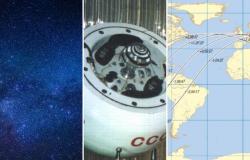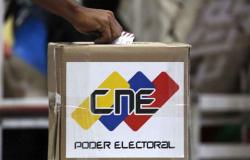This May 9, 2025, 75 years of the Schuman Declaration, the proposal of the French Foreign minister Robert Schuman (1886-1963) is turned for their country and Germany to put in common the production of coal and steel-raw materials indispensable for the European industry and economy-through the CECA (economic community of coal and steel). The creation of this market would be the germ of the current European Union.
Perhaps many will seem to them that it is not the most appropriate time to remember this event, immersed as we are in a fundamental change in international relations and globalization.
However, and precisely because the current geopolitical scenario has been greatly complicated, it is important to remember the enormous importance it had for Europeans, and for the world in general, the integration process that opened the Schuman statement.
Read More: The European Union: a history of resilience, cooperation and learning
Peace and reconciliation
The proposal for the creation of the CECA was a great step towards the reconciliation of France and Germany, two enemies that, between 1870 and 1945, were three times at war: the Franco-Prussian war (1870-1871), World War I (1914-1918) and World War II (1939-1945).
Now it was time to bet on a lasting peace – based on the creation of economic ties and in the search for mutual interest – among the historically found rivals. And it worked. To the point that the mint became the starting point of the “Franco-German Axis”, fundamental to Europe, and to which now the French president Emmanuel Macron-to receive in the Elysium the new German chancellor Friedrich Merz-calls “Franco-German reflection”.
Moreover, the seed that planted the Schuman statement fructified in the form of a long period of peace in Western Europe, which has not renewed a warlike conflict between the members of the European Union. In a territory that was at almost permanent war since the fall of the Roman Empire, that is, unquestionably, an outstanding achievement.
After this beginning, France and Germany invited other democratic countries in Western Europe to join their project. They accepted Italy, Belgium, the Netherlands and Luxembourg: the economic and monetary union would be the next step in the formation of the current European Union.
-Common project
In 1953, three years after the Schuman statement, Europeans tried to support their economic and commercial agreement with political and institutional basis. To do this, they considered the possibility of creating the European defense Community, but the treaty that drafted Alcide de Gasperi, Italian prime minister between 1945 and 1953, was rejected by the French National Assembly (although it was an initiative of France).
The impulse towards a common defense came from the existential threat that represented the Soviet Union for European Security. Today the story is repeated, after the invasion of Ukraine by Russia, feeding the need of Europeans to implement a common defense.
Now, the advantage is that the Member States of the European Union have decades of cooperation among them. Proof of this is the decision of European leaders to use EU funds to finance projects related to common defense. Without the mint, and everything that meant, this would be unthinkable now that Europe has a common enemy again.
Read more: NATO and security dilemma
European cooperation
From the beginning, the CECA was a European cooperation project. A cooperation that promoted and supported the United States openly, through the Marshall Plan and the European Organization for Economic Cooperation (OECE), the current Organization for Economic Cooperation and Development (OECD).
This economic cooperation, which materialized in the Economic and Monetary Union, allowed to end the fragmentation of the market that harmed Europe after the fall of the Austrohungal Empire. Already in 1926, the Austrian politician and Count Richard von Coundenhove-Kalergi proposed: “How could European companies compete with Americans if they operate in a market divided into stagnant compartments against the large single market in which their American rivals work?”
Thanks to the economic integration process that inaugurated the Schuman statement that disadvantage has diminished ostensibly. To a large extent, the competitiveness of European companies is that they have a continental scale base thanks to the economic and monetary union achieved.
In addition, having achieved this integration can now give Europeans – if they are able to speak with a common voice – the ability to negotiate in a multipolar world of economic and political giants such as the one that is being configured.
None of this would have been possible if Jean Monnet, then a commissioner of planning of the French government, would not have proposed to Minister Robert Schuman the idea of creating the mint, and if he had not had the great vision, and the boldness, to raise it in the form of a declaration Schuman. Our present as Europeans, and possibly our future, we owe it to this decision.






